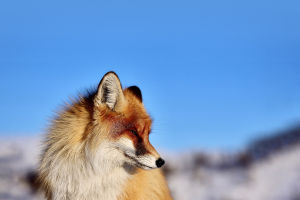Speaking of flying animals, many people may immediately think of birds, but if you want to talk about flying skills, then birds may have to give up. After all, insects flew to the blue sky as early as 300 million years ago in the Carboniferous period, and there were no birds on the earth at that time.
After more than 300 million years of evolution, the existing insects on the earth have already possessed amazing flying abilities. Dragonflies, as a carnivorous insect, one of the favorite foods of dragonflies is mosquitoes.
According to statistics provided by entomologists, the success rate of dragonflies preying on mosquitoes is as high as 90%, which is enough to show that dragonflies' flying technology is far superior to mosquitoes. In fact, the flying technology of dragonflies can be said to be the top level in nature, and because of this, they are also known as the kings of the flying world.
Dragonflies can fly up to 50 kilometers per hour, which is much faster than most insects. They can quickly come to rest in high-speed motion and hover firmly in the air, and can also go from hovering to high-speed flight in a very short period of time.
During the flight, dragonflies can also make "sharp turns" without warning. When chasing prey, the instantaneous acceleration of dragonflies can reach more than 9g, which undoubtedly greatly improves their hunting success rate.
Dragonflies can fly in any direction in the air, you read it right, in any direction, whether it’s down or up, left or right, and they can even fly upside down.
In addition to this, dragonflies can also fly very large distances at once. Some dragonflies have long been observed to migrate across the Indian Ocean to Africa.
And in 2016, a study by biologists from Rutgers University showed that a thin-winged dragonfly can fly across the Pacific Ocean, and its flight distance can be as high as 6,440 kilometers.
If we had never seen a dragonfly, we probably wouldn't have imagined that such a flying insect could exist in nature. So how do they do it?
As the king of flight, dragonflies have four huge wings, their wings are very thin, and the thickness of the thinnest point can be less than 2 microns. After magnifying it, it can be seen that the dragonfly's wings have a special network of wing veins.
The "main vein" is a quadrilateral network, while the "secondary veins" are mostly pentagons and hexagons. Scientists believe that this structure makes dragonfly wings very resilient.
It is worth mentioning that in the past days, "flutter" has always been a major problem for humans in the field of aircraft. The so-called "flutter" refers to a harmful vibration of the wing of an aircraft under the combined action of aerodynamic, elastic and inertial forces during flight.
The higher the speed of the aircraft, the stronger the "flutter", and in severe cases, it may even cause the wing to break directly.
In theory, a huge wing like a dragonfly can also "flutter", but in fact, dragonflies are not threatened by "flutter" at all. After research, scientists found that the reason is that there is a thickened area called "wing eye" on the leading edge of dragonfly wings, which can effectively eliminate the "flutter" generated by dragonflies flying at high speeds.
In the following days, people imitated dragonflies and added similar structures to the wings of aircraft, thus overcoming the problem of "flutter" in one fell swoop.
Research has shown that each wing of a dragonfly is controlled by an independent muscle, and that they can also rotate.
This means that the dragonfly can independently control the inclination of the fore and hind wings as well as the amplitude and frequency of wing vibration when flying, and various flight requirements can be achieved through different phase differences.


